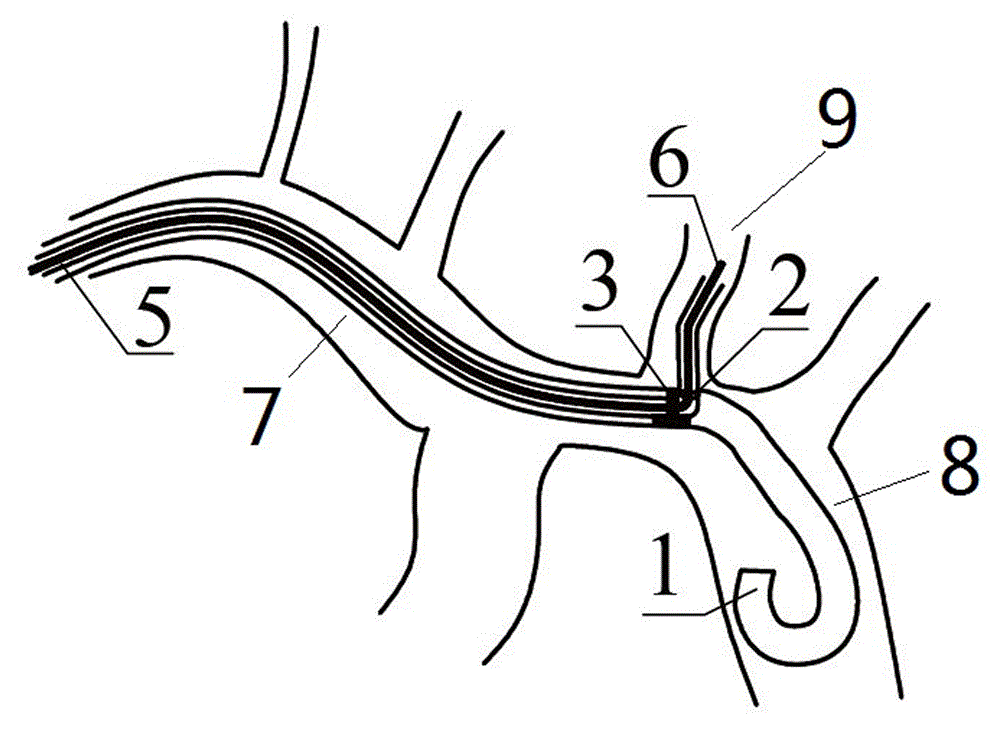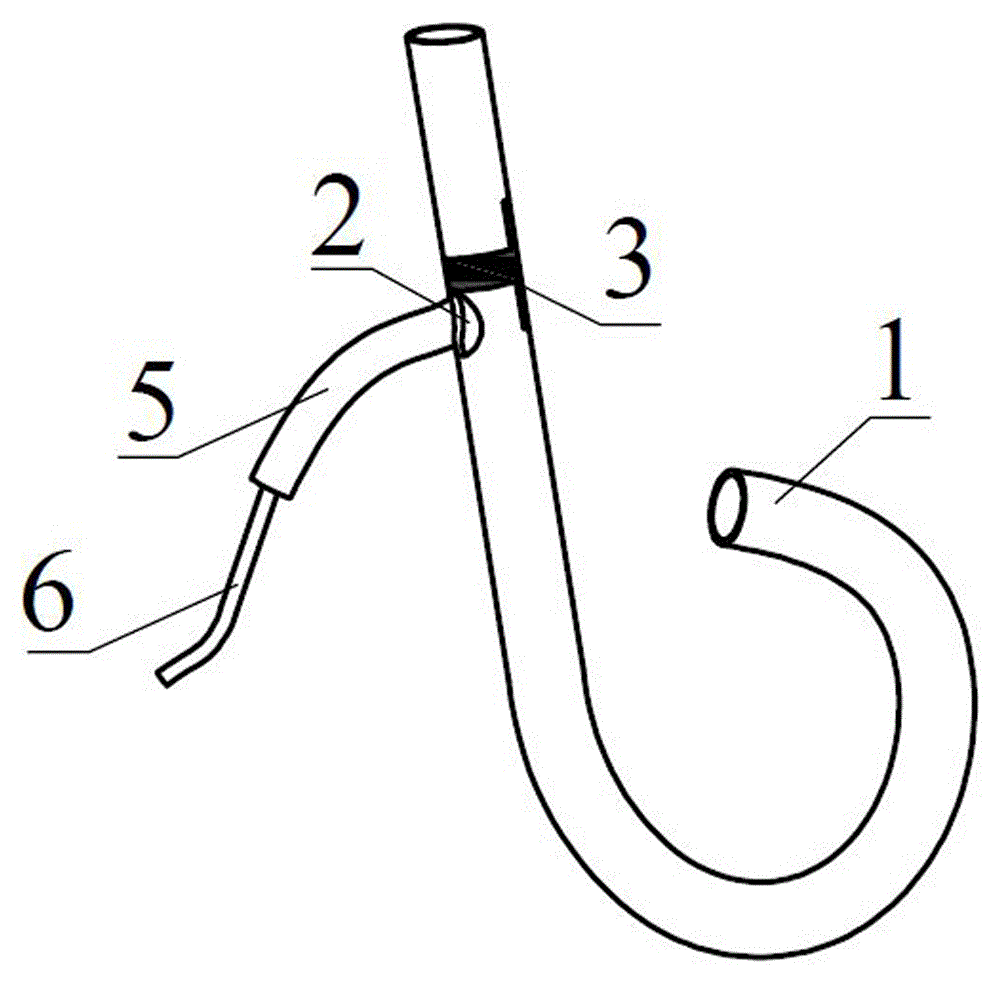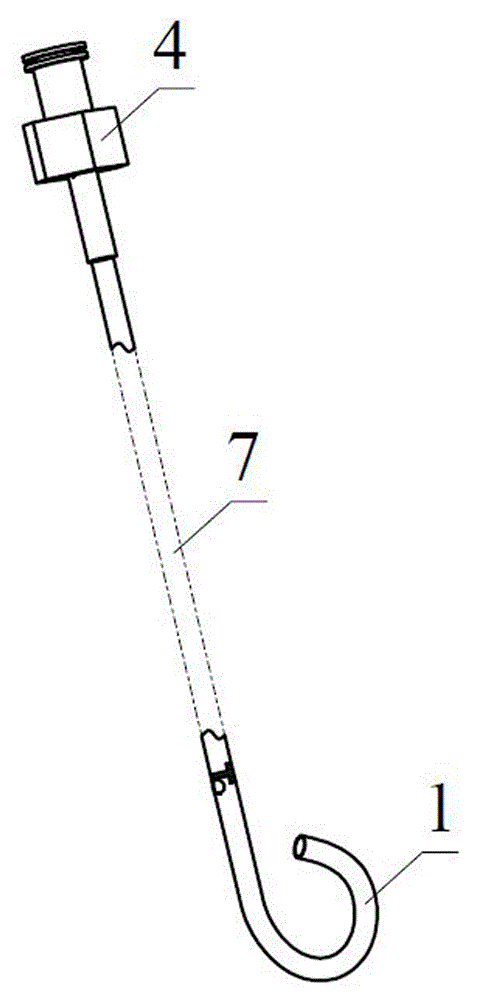Guiding catheter and catheter assembly for angiography and angiography method
A technique for guiding catheters and angiography, applied in catheters, applications, and instruments for radiological diagnosis, etc., can solve problems such as cumbersome operations, difficult selection of side vessels, and high technical requirements for surgeons, and achieve the effect of ensuring stability
- Summary
- Abstract
- Description
- Claims
- Application Information
AI Technical Summary
Problems solved by technology
Method used
Image
Examples
Embodiment Construction
[0023] Examples of catheter assemblies are Figure 1~4 As shown: the catheter assembly in this embodiment is used for cerebral angiography via the radial artery approach, and includes a guiding catheter 7 and an angiographic catheter 5. The guiding catheter 7 includes a tubular body with a guiding tip 1 at the front end. The rear end is provided with a guide pipe joint 4, and the tubular body is provided with a side opening 2 communicating with the inner hole of the tubular body on the rear side of the guide end. The distance between the side opening and the front end of the guiding catheter is 10 cm. The distance from the side opening to the rear end of the guiding catheter is 95 cm. The leading end 1 is bent to one side of the tubular body, and the side opening is located on the other side of the leading end. The shape of the guide tip 1 is an arc-shaped pigtail. The tubular body is a steel wire braided tube. The pigtail-shaped guide tip is non-invasive and soft in texture....
PUM
 Login to View More
Login to View More Abstract
Description
Claims
Application Information
 Login to View More
Login to View More - R&D
- Intellectual Property
- Life Sciences
- Materials
- Tech Scout
- Unparalleled Data Quality
- Higher Quality Content
- 60% Fewer Hallucinations
Browse by: Latest US Patents, China's latest patents, Technical Efficacy Thesaurus, Application Domain, Technology Topic, Popular Technical Reports.
© 2025 PatSnap. All rights reserved.Legal|Privacy policy|Modern Slavery Act Transparency Statement|Sitemap|About US| Contact US: help@patsnap.com



